Introduction and Review of Literature
Oral hygiene is
the process of protecting the oral cavity and
keeping it healthy and clean by various modalities like brushing and flossing
in order to prevent tooth decay and gum diseases. Oral health is just not
limited to the teeth being healthy, but means a comprehensive protection of all
the structures in the oral cavity. Oral health
knowledge related to periodontal and oral diseases has a major role in the
treatment and prevention of the disease amongst children, adolescents and
adults including university students. University students are a good
representative sample for the population since they reflect education,
socioeconomic conditions, acculturation, psychological stress, and culture,
which can affect their oral health behavior and status. Educating adults and
university students seems among the means to improve the oral health knowledge
and behavior of the nation in future. In UAE, the oral health system is
currently in transition. Our information is limited regarding the knowledge and
attitudes about oral diseases and their prevention. Due to a lack of studies
about oral health attitudes and behavior among pre-university and university
students in the UAE, systematic data are needed for public oral healthcare
planning [1,2].
Oral health
habits are measures people learn and practice regularly in order to maintain
good oral health or prevent oral diseases. Traditionally, good oral health
practice consists of continuous implementation of 2 broadly
defined sets of behavior: self-care habits (dental hygiene, restriction of
sugar products, and use of fluoride products) and utilization of dental
services (regular dental examinations, oral health education and professionally
applied preventive measures). Many methods are available for maintaining
optimal oral hygiene, among which tooth brushing is the most widely accepted
method for the prevention and control of periodontal diseases [3,4].
The prevalence of
oral diseases
varies from person to person, geographical region due to the in-accessibility
to health services and as well the lack of knowledge and awareness plays are
crucial role. The development of the common periodontal
diseases depends mainly on human behavior, and the control
of these diseases is greatly supported by the fact that the etiological factors
are well documented. Many studies showed that effective plaque control for each
person cannot be achieved without interactive motivation that includes
educational and informative knowledge for the patient about periodontal
diseases, their initiating factors, and the major role of dental plaque as the
initiating cause for inflammatory periodontal changes [5,6].
Further more
people have no behavior of visiting dental clinics for general checkup. They
believe that the sign of dental diseases is painful teeth/tooth and the
treatment available to dental clinic is only extraction. The main cause of
periodontal disease is bacterial plaque, plaque can irritate the gums and can
lead to gum diseases although many other factors such as hormonal changes,
diabetes, poor nutrition, smoking, and stress may affect the initiation and
progression of gingival and
periodontal diseases [7,8].
Dental anxiety and
fear are considered as one of the major reasons for avoidance of dental care
thus resulting in deterioration of their personal oral health. It has become
increasingly clear that the oral cavity can act as the site of origin for
dissemination of pathogenic organisms to distant body sites. A number of
epidemiological studies have suggested that oral infection, especially marginal
and apical periodontitis may be a risk factor for systemic diseases. Some of
the systemic diseases associated with oral infection includes; atherosclerosis,
myocardial infarction, infective endocarditis, low birth weight, bacterial pneumonia
and gingival inflammation caused by diabetes mellitus [9,10].
Majority of the
patients associated dental fear with past painful experiences during their
childhood and from negative staff behavior. Other factors that triggers dental
anxiety and fear are from procedures of restorative dentistry which can be due
to sight, sound and the vibration sensation of dental drills coupled with the
sight and sensation of a local anesthetic injection [11,12].
Good oral health not
only promotes an individual to look and feel good, it also helps in preserving
oral functions. Regular dental visits are highly recommended to maintain a good
oral health and prevent such problems. Also, equally important are the personal
oral hygiene routines such as tooth brushing and dental flossing. The American Dental Association (ADA)
and other organizations recommended that adults should get preventive dental visits
at least once every six months. These visits provide professional diagnostic and
prophylactic services as the early detection and treatment of dental caries and
oral diseases [13,14].
Quteish Taani’s
study in 2004 on oral health knowledge showed that 25% of adults suffered
bleeding gums on brushing and around the same percentage suffered bad breath.
Nearly 40% of adults believed that they had periodontal disease However, the
knowledge of periodontal problems was found to be poor among adults. These data
indicate that development and implementation of well-structured dental health
education programs are needed to improve and maintain suitable oral health
standards among the population. A good knowledge about oral health is necessary
to pursue healthy oral practices. Prevention of Oral disease is mainly
dependent on good oral hygiene. Dental problems such as dental caries,
periodontal disease, tooth loss and oral cancer are
major public health problems in high income countries and the burden of oral
diseases is growing in much low income and middle income countries. The
provision of preventive dental care for adults depends greatly on the patient’s
initiatives in utilizing dental care [15,16].
Many studies
about oral hygiene behaviors have been conducted among University students but
data is limited among university students in UAE. The purpose of this study is
to assess and compare between oral health knowledge, behavior, attitudes among
Universities students of the UAE.
Methods
Study Design
A cross sectional
study was conducted for duration of six months from December to May 2020, among
students of selected universities across the UAE, RAK Medical
Health and Sciences University, American
University of Sharjah, University of
Sharjah, American
University of Dubai, Zayed University, Khalifa
University. A prospective study by questionnaire was done and
sample size of 300 was agreed on. Our inclusion criteria consisted of students
from random ages between 18-30 of both male and female were asked to
anonymously fill out a structured two appendix questionnaire which addressed
the following aspects: (a) knowledge, attitudes and their perception about
teeth and oral hygiene, and (b) dental health habits and attitudes (regularity
of dental visits, tooth brushing, flossing, usage of mouthwashes). All the
students were explained regarding the nature and purpose of the study.
Exclusion criteria students with systemic diseases, and ages below the inclusion
criteria, uncooperative individuals and dental students were all excluded from
the study.
Data Collection
The study
material and data collection procedure were both obtained from questionnaires
that were based on previous studies [8]. The students were requested to fill
the questionnaire they were asked to respond to each item according to the
response provided in the questionnaire. Responses included multiple choice
questions in which the students were instructed to choose only one appropriate
response from a provided list of options. 300 students from different colleges
in UAE filled questionnaires were collected giving a response rate of 100%.
The collected
data were then subjected to statistical analysis; Sample T test was applied to
compare the study groups from different universities, gender and age group. Results
were be reported only in frequencies due to lack of some types questions
answers from some students in choose more than one choices (Table 1 and Table 2).
Table
1:
Study the student’s behavior and attitude towards oral hygiene. (For table 1,
kindly visit the PDF)
Table
2: Understand
and study the student’s knowledge about dental health. (For table 2, kindly
visit the PDF)
Results
All respondents
were included in the data analysis of the study. The obtained data were
analyzed using the Statistical Package for the Social Sciences (SPSS) software
for windows version 20.0. All statistical tests were performed using 0.05 as
the level of significance at 95% confidence interval. Depending on the nature
of the variables, descriptive statistics were used to tabulate and describe the
data (frequency, distribution, percentages) and inferential statistics (T-test
and Chi Square tests). The statistical analysis showed a positive significant
correlation between dental health knowledge and attitude at an R=0.4. T-statistics
was carried out and gave a value of 7.677 which provides evidence supporting
the alternative hypothesis. Furthermore, F-stat test gave a value of 58 which
was further confirmed with a P-value of 2.431e-13 which provides strong
evidence against the null hypothesis; this data can be seen below in the data sheet
provided from MAT lab in Figure 1.1.

Figure1.1:Data sheet provided from MAT lab.
Figure 1.2 below shows how the data is scattered at an expected typical R=0.4 value with a positive slope showing that there is a positive correlation between the two appendixes questionnaire, where appendix 2 tested oral health knowledge and appendix 1 tested oral health behavior.
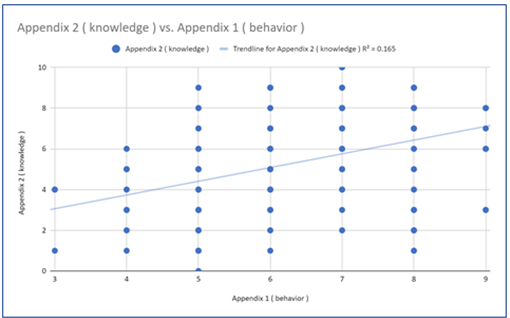
Figure1.2:Positive correlation between the two appendixes questionnaire.
Moreover, Figure 2 below showed that the study
revealed that the majority of people visited the dentist only at a time of need
(pain, implants, cleaning etc.) and not for regular checkups.
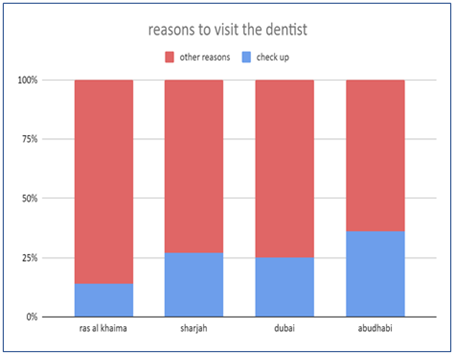
Figure2: Reasons to visit the dentist.
Additionally in Figure 2 and Figure 3 showed that, the use of mouthwash across cities with lower
socioeconomic status has been close to substantial in comparison with higher
developing cities such as Dubai and Abu Dhabi. However, the use of newly
additives alongside of toothpaste such as activated charcoal and salt remains
low but is highest in Dubai (Figure 3).
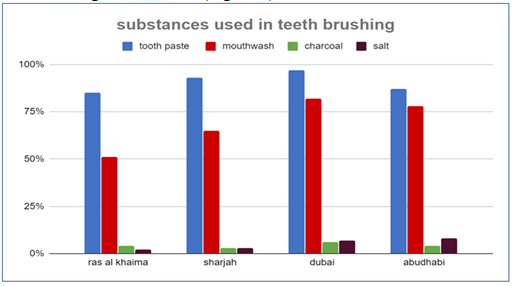
Figure3:Substances used in teeth brushing.
Figure
4.1
is a result from a study done shows that 138 (98.57%) students knew that dental
caries were mainly caused by bacteria. Only 49 (35%) students knew that
sweetened food or drinks cause’s dental caries. About 117 (83.57%) students
knew that fluoride toothpaste prevents dental caries. About 137 (97.86%)
students knew tobacco causes oral cancer.
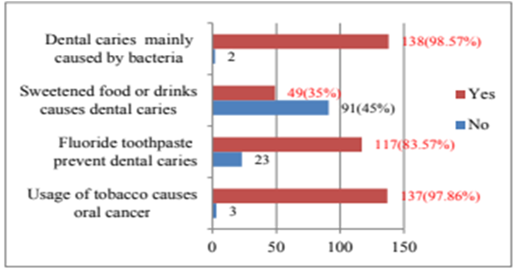
Figure4.1: Study showing the causes for dental caries.
Figure
4.2
shows how our results align with the study mentioned above where 84% of the
students believe that dental caries is caused by bacteria and 63% agrees that
fluoride prevents dental decay and 91% of the students agree that tobacco
causes cancer.
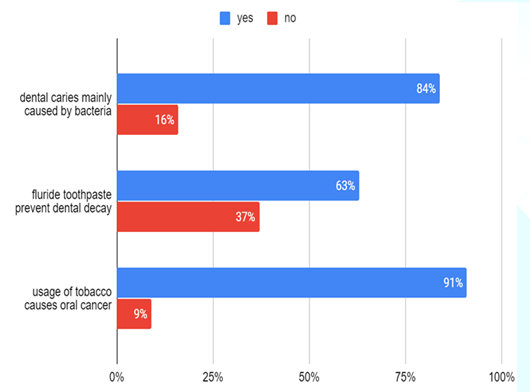
Figure4.2: Percentageof student’s opinion on dental caries, fluoride and tobacco.
Figure
5.1: 20
(14.28%) student’s visit dentists once in 6-12 months, 65 (46.43%) when there
is dental pain, and 55 (39.28%) have never visited dentists.
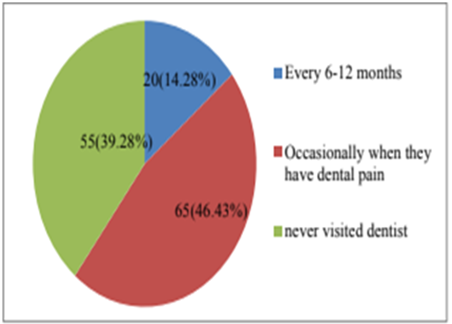
Figure5.1: Results of student’s dental visits.
Figure
5.2:
Shows the result of our study which agrees with the previous study that the
majority of the population visit the dentist only when in pain. However, our
population had 0% of the students never visited the dentist before and 15%
visited the student 1-2 per year.

Figure5.2: Population visit to dental clinic.
Discussion
In the developing
countries, there is a high prevalence of oral diseases in their communities.
This can be due to neglect, scarcity of resources, poor knowledge and negative
attitudes. This cross sectional study aimed to assess the knowledge, attitude
and practices of 300 students who were randomly selected from five colleges in
UAE.
In the present
study, it was reported that the students had a good knowledge about oral health.
It was reported that majority 63% of the students knew that the poor oral health
lead to gum diseases. A good knowledge about oral health is necessary to pursue
healthy oral practice. Several studies have reported that dental health
attitudes become more positive and improved with an increasing level of dental
education [16,17].
The attitude
among the students regarding oral health was diverse. Majority of students
perceived that regular visits to the dentist were necessary and this also with accordance
a study done by Jasim Al-Ansari in 2019 agreed with our results which had showed
that oral health knowledge seemed to be limited within the students and more
than half of the students had visited a dentist during the previous 12 months
but only one third of students were brushing twice a day or more often [16]. The
study concluded that their tooth brushing practices are still far behind the
international recommendation (twice a day). Knowledge, why it should be done
so, was very limited (Shown in Figure 2 and Figure 3).
Several studies
conducted in Spain, Jordan, India and Kuwait showed an association between
increased knowledge and better oral health. However good oral health not only
promotes an individual to look and feel good, it also helps in preserving oral
functions [18-20].
As in Figure 4.1
and Figure 4.2 concluded that Almost everyone used a toothbrush regularly, but
flossing and usage of mouthwashes fell short and in addition to the study, it
was also observed that many of these students lack crucial education and
knowledge when it came to periodontal related structures, and diseases or
complications that can arise from not practicing proper oral hygiene and this
results in acceptance with Retnaningsih Dwi and Arinti Rani (2018) [21,22].
This results also
showed (in Figure 5.1 and Figure 5.2) that young people in the UAE are
different in attitude when it comes to the importance of visiting the dentist,
our results showed that the students visited the dentist only when they had a
dental problem, as pain is the most important factor for visiting the dentist.
This concluded same results as Muthu, et al. in 2015 [23].
Periodontal
disease, including gingivitis and periodontitis, is considered to be one of the
most common diseases among the population and, if left untreated, can lead to
tooth loss. University students are a good representative sample for the
population since they reflect education, socioeconomic conditions,
acculturation, psychological stress, and culture, which can affect their oral health
behavior and status [24,25].
Many Studies
showed that high percentage of adults reported gum bleeding on brushing, bad
breath, and being irregular attendees to the dentist. In another study, he
showed that around 80% of the subjects attended the dentist only in an
emergency. Non-dental university students receive no oral health
education at all during their university study, and their
curriculums contain no information regarding oral health education. The above
mentioned findings in the literature might explain why many participants
demonstrated poor knowledge of periodontal disease signs, causes, preventive
measures, and relations to general health, systemic disease and smoking
[26,27].
This similar
agreement with Ashley, et al. [28] found that oral health knowledge is
considered to be an essential prerequisite for health related behavior even
Vermaire, et al. in 2010 [29] found that a good knowledge about oral health is
necessary to peruse healthy oral practice. While a weak association seems to
exist between knowledge and behavior in cross sectional studies.
Furthermore, studies
were done by Baseer, et al. in 2012 [30] and Timmerman, et al. in 1997 [31]
disagreed with our results which reported more attributed to more favorable
conditions like universities dental hospitals, free dental treatment at
universities students. This could be due to the fact that students had
excellent opportunities to promote oral health over health.
However students
believed that these are a relationship between oral health and general health
exists, brushing of teeth regularly prevents dental decay, sweets and soft
drinks affect the teeth adversely. The relationship between knowledge, attitude
and practice students had both good knowledge in accordance with education
levels and economic status which shown in our results in Figure 3 which shown a
difference between Dubai, RAK, Sharja and Abu Dhabi.
The relationship
between knowledge, attitude and practices 36.2% students had both good knowledge
and positive attitudes and 33.7 % students had both good knowledge and good practice.
This similar to the findings of several studies that have shown oral health
knowledge among the universities students positively influences their attitudes
and behaviors, also in agreement with the findings of the study conducted
[32-34].
In our study the
prevalence of daily, brushing was reported that majority of the students
brushed once daily and were using tooth brush and toothpaste, while a study
conducted by Amin, et al. in 2008 [35] in Saudi Arabia (who reported that 45%
of students were using miswak as a brushing tool).
Our results
showed that the students visited the dentist only when they had a dental
problem. This could be interpreted as pain is the most important factor for
visiting the dentist. As far as reason for not visiting the dentist, there did
not have any pain in the tooth. Other reasons for not visiting the dentist were
busy schedule, high cost of treatment and afraid of the dental needle.
Conclusion and Summary
The importance
and aim of this study was to compare the oral health knowledge, attitudes,
habits and perception about dental health among students both male and female
between the ages 18-30 years old from the UAE. Overall, the study has resulted
in accepting the hypothesis and rejecting the null hypothesis. This should
emphasize the importance of spreading correct dental education amongst the
population to help regress the spread of dental diseases. The fact that
participants have shown un-abidements to ADA oral hygiene
recommendations such as not visiting the dentist twice
per annum for regular checkup and maintenance signifies the importance of
having proper and correct awareness of oral hygiene knowledge. We recommend
holding specialized dental awareness camps and distribute dedicated
advertisements that would support the benefit of this cause. Lastly, we would
like to further extend this research by testing what is the percentage of the
population that abides by the ADA guidelines of oral hygiene and if that number
is significantly high or not.
Recommendations
The study showed
that oral health knowledge among the university students positively influences
their attitude and behavior. Oral health education programs should be conducted
with reinforcement, so that students can close the gap between knowledge and
practice by changing their attitude from negative to positive one.
Ethical Approval
This study was
approved by The Research Ethics Committee of RAKMHSU with proposal
RAKMHSU-REC-184-2020-UG-D.
References
- Jaber MF, Khan A, Elmosaad Y, Mustafa MM, Suliman N,
et al. Oral health knowledge, attitude and practices among male Qassim
University Students (2017) Int J Comm Med Pub Heal 4: 2729-2735. http://dx.doi.org/10.18203/2394-6040
- Al-Hussaini R, Al-Kandari M, Hamadi T, Al-Mutawa A,
Honkala S, et al. Dental health knowledge, attitudes and behavior among
students at the Kuwait University health sciences centre (2003) Med Princ Pract
12: 260-265. https://doi.org/10.1159/000072295
- Al Zarea Bader K. Oral health knowledge of
periodontal disease among university students (2013) Int J Dent 2013: 647397. https://doi.org/10.1155/2013/647397
- Emmanuel A and Chang'endo E. Oral health related
behavior, knowledge, attitudes and beliefs among secondary school students in
Iringa Municipality (2010) Dar Es Salaam Med Stud J 17. https://doi.org/10.4314/dmsj.v17i1.61341
- Li X, Kolltveit KM, Tronstad L and Olsen I. Systemic
diseases caused by oral infection (2000) Clini Microbiol Rev 13: 547-558. https://doi.org/10.1128/CMR.13.4.547
- Kirova DG. Dental anxiety among dental students
(2011) J IMAB 17: 137-139. https://doi.org/10.5272/jimab.2011172.137
- Deepak V, Mahesh RK and Munivenkatappa LVP. Dental anxiety,
fear and phobia in children (2014) Int J Dent Res Develop (IJDRD) 4: 1-14.
- Alkhalifa NS and Zahran DH. Reasons preventing or
delaying dental visits in Taibah University students (2014) J Medic Med Res 13:
1-8. https://doi.org/10.9734/bjmmr/2016/23519
- Ali S, Farooq I, Khan SQ, Moheet IA, Al-Jandan BA, et
al. Self-reported anxiety of dental procedures among dental students and its
relation to gender and level of education (2015) J Taibah Univ Med Sci 10:
449-453. https://doi.org/10.1016/j.jtumed.2015.06.002
- Al Kawas S, Fakhruddin KS and Ur Rehman B. A
comparative study of oral health attitudes and behavior between dental and
medical students (2010) J Int Dent Med Res 3: 6-10.
- Sharda JA, Shetty S, Ramesh N, Sharda J, Bhat N, et
al. Oral health awareness and attitude among 12-13-year-old school children in
Udaipur, India (2011) Int J Dent Clini 3: 16-19. http://intjdc.com/index.php/intjdc/article/view/377/pdf
- Al-Batayneh OB, Owais AI and Khader YS. Oral health
knowledge and practices among Diverse University students with access to free
dental care: a cross-sectional study (2014) Open J Stomatol 4: 135-142. https://doi.org/10.4236/ojst.2014.43021
- Williams RC. Understanding and managing periodontal
diseases: a notable past, a promising future (2008) J Periodontol 79:
1552-1559. https://doi.org/10.1902/jop.2008.080182
- Kumar NPG, Kakodkar P, Peeran SW and Abdalla KA.
Oral self-care practices and self-assessment of dental health reported by the
dental students from Sebha (Libya) (2014) J Dent Res Scien Develop 1: 46. https://doi.org/10.4103/2348-3407.135074
- Reddy SR, Lavanya R, Padma R, Saimadhavi N and
Chennoju SK. Oral hygiene practices and habits among dental students and staff
in a dental college, India (2012) Cumhuriyet Dent J 17: 7. https://doi.org/10.7126/cdj.58140.1008001679
- Al-Ansari J, Honkala E and Honkala S. Oral health
knowledge and behavior among male health sciences college students in Kuwait
(2003) BMC Ora Heal 3. https://doi.org/10.1186/1472-6831-3-2
- Al-Omari, Mousa W and Al-Omiri MK. Dental anxiety
among university students and its correlation with their field of study (2009)
J Appl ora Sci 17: 199-203. https://doi.org/10.1590/s1678-77572009000300013
- Yao Ke, Yao Y, Shen X, Lu C and Guo Q. Assessment of
the oral health behavior, knowledge and status among dental and medical
undergraduate students: a cross-sectional study (2019) BMC Oral Heal 19: 26. https://doi.org/10.1186/s12903-019-0716-6
- Alayadi H, Bernabe E and Sabbah W. Examining the
relationship between oral health-promoting behavior and dental visits (2019)
Int J Heal Sci 13: 40-43.
- Al-Batayneh O, Owais A and Khader Y. Oral health
knowledge and practices among diverse university students with access to free
dental care: a cross-sectional study (2014) Open J Stomatol 4: 135-142. https://doi.org/10.4236/ojst.2014.43021
- Retnaningsih D and Arinti R. Habit of tooth brushing
with the dental caries incidence (2018) Int J Res Med Sci 6: 2606. https://doi.org/10.18203/2320-6012.ijrms20183240
- Ahad M and Sukumaran G. Awareness of tooth brushing
techniques and proper oral hygiene among school children (2015) J Pharm Sci Res
7: 367-372.
- Lucena RN, Menezes K, Cavalcanti A, Granville-Garcia
A and Lins RDAU. Oral hygiene habits, periodontal status and need for treatment
in university students (2012) Rev Odonto Ciencia 27: 289-293.
- Muthu J, Priyadarshini G, Saravanakumar R, Pratebha
B and Sivaramakrishnan M. Evaluation of oral health attitude and behavior among
a group of dental students in Puducherry, India: A preliminary cross-sectional
study (2015) J Ind Soci Periodontol 19: 683. https://doi.org/10.4103/0972-124x.164744
- Lang WP, Farghaly MM and Ronis DL. The relation of preventive dental behaviors to periodontal health status (1994) J Clini Periodontol 21: 194-198. https://doi.org/10.1111/j.1600-051x.1994.tb00303.x
- Alzammam N and Almalki A. Knowledge and awareness of
periodontal diseases among Jordanian University students: A cross-sectional
study (2019) J Ind Soc Periodontol 23: 574. https://doi.org/10.36283/pjmd8-4/014
- Noori S. Assessment of dental anxiety in pre and
post dental treatment (2019) Pak J Med Dent 8. https://doi.org/10.36283/pjmd8-4/014
- Ashley FP. Role of dental health education in
preventive dentistry In; Prevention of dental diseases, Murray JJ (1996) Oxford
University Press, UK, pp-406-14.
- Vermaire JH, Hoogstraten J, Van Loveren C,
Poorterman NJA and Van Exel NJA. Attitudes towards oral health among parents of
6-years-old children at risk of developing caries (2010) Com Dent Oral Epidmiol
38: 507-520. https://doi.org/10.1111/j.1600-0528.2010.00558.x
- Baseer MA, Alenazy MS, AlAsqah M, AlGabbani M and Mehkari
A. Oral health knowledge, attitude and practices among health professionals in
King Fahd Medical City, Riyadh (2012) Dent Res J 9: 386-392.
- Timmerman EM, Hoogstraten J, Meijer K, Nauta M and
Eijkman MA. On the assessment of dental health care attitudes in 1986 and 1995,
using the dental attitude questionnaire (1997) Comm Dent Health 14: 161-165.
- Freeman R, Maizel J, Wyllie M and Sheiham A. The
relationship between health related knowledge, attitudes and dental health
behaviors in 14-16 year old adolescents (1993) Comm Dent Health 10: 397-404.
- Jamjoom HM. Preventive oral health knowledge and
practice in Jeddah, Saudi Arabia (2001) J King Abdul Uni Med Sci 9: 17-25. https://doi.org/10.4197/med.9-1.3
- Jassem A, Eino H and Sisko H. Oral health knowledge
and behavior among male health sciences college students in Kuwait (2003) BMC
Oral health 3. https://doi.org/10.1186/1472-6831-3-2
- Amin TT and Al-Abad BM. Oral hygiene practices,
dental knowledge, dietary habits and their relation to caries among male primary
school children in Al Hassa, Saudi Arabia (2008) Int Dent J 6: 361-371. https://doi.org/10.1111/j.1601-5037.2008.00310.x
Corresponding author
Hala Zakaria, Professor
of Oral Radiology, Diagnosis and Oral Medicine, Faculty of Dentistry, Internship
program Coordinator, British University of Egypt, Egypt, E-mail: hzakaria1208@gmail.com
Citation
Zakaria H, Nasreen H and Basssam
E. Assessment of oral health care and knowledge amongst university students
(2021) Dental Res Manag 5: 26-32.
Keywords
Oral hygiene care between university
students, Oral hygiene attitude, Dental education, Dental knowledge, Oral health,
Oral health attention between students


 PDF
PDF